#resource museum
Explore tagged Tumblr posts
Text

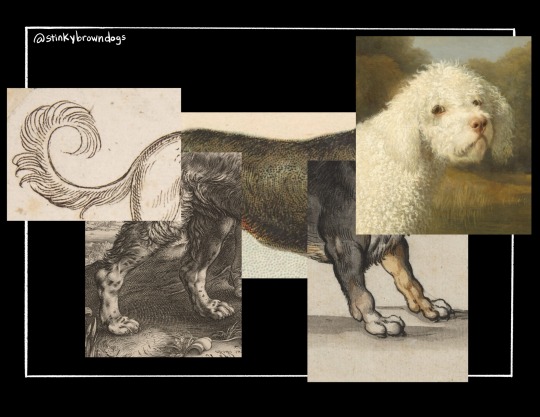
Mutts
#made from open source artworks from various online art resources#the met museum online art gallery is amazing#my art#collage#also not my art#u get it
1K notes
·
View notes
Text
A guide to writing fics set in museums / with a museum worker character
Hey hi hello it’s your local museum worker here, offering you some insight and tips to writing museum-related fics! This is primarily organized as a list of different jobs you could have in a museum and what their duties entail. This post might also be useful to you if you’re considering working in museums and want to know What Goes On In There. Let’s go!
For simplicity/fic-writing purposes, I would divide museums into 2 very rough groups: large national or city museums that Have Money (think the Smithsonian or British Museums, or the Chicago Field Museum or the Royal Armouries Museum in Leeds); and smaller local museums. These could be local industry and culture/history-of-our town museums, historic houses, or really niche subject museums run by One Person With A Passion.
Big national museums have a fuckton of staff and money (museums can never have enough money. But these places are very well-off compared to somewhere small that might always be hustling and writing grant applications). If you work here you’re likely to have a specific role in a particular department, and you probably won’t do much outside this role (ex., if you work in collections management, you probably won’t also design exhibits)
The smaller the museum, the more varied your workload will be/the more likely you are to be doing a little bit of everything. You’re probably organizing collections storage, manning the front desk, and desperately running fundraising efforts, all at once.
To this end, smaller museums are more likely to be closed one or two days a week- you’ll be there, probably cleaning displays or managing storage, but visitors won’t be.
A lot of (most?) universities also have museums, so a college town setting is also doable. But the same big vs small museum disparity is still possible! At Penn State University, for example, the Palmer Art Museum is its own (recently redone iirc) building in the center of campus with a lovely plaza out front, while the Matson Museum of Anthropology is uhhhhh a couple classrooms in the Anthropology Department (which they’re currently rebuilding tbf, so we’ll see what they’ve done with it in 2025).
Types of Jobs
Curator
The one museum job that everyone can name. Nominally the person in charge. Probably laments that their job is way more admin than fun hands-on stuff now.
Actually this is the role I have the least knowledge of, but I think that’s partially because this job might vary the most from place to place? Structural organization can vary a lot between institutions, but I think the higher up you get in any field, the more your job tends to consist of meetings/overseeing, designating, and ~liaising~
A list of things a curator might do:
Planning or approving events and fundraisers, schmoozing with donors and members at said events, approving or designing a schedule of exhibits, publish outreach/advertising or research materials, oversee hiring, approve new object acquisitions (or de-acquisitions), generally make sure that the museum is working within the scope of its mission and if necessary, change or refine their mission
The curator might not necessarily control a museum’s funds; in this case they’ll liaise with the people who do, likely a Board of Executives or Board of Trustees. Once they get the money from these people, though, they could potentially redistribute it as they see fit.
If you work in a fuckoff museum like the BM, you could also be the curator of a specific department, arranged by overarching subject, geographic area, time period, or even object type (eg Curator of Archaeobotany, Curator of Korean Collections, curator of coins from the medieval period). These categories can be more or less specific depending on what kind of holdings your museum has. I think these types of curators would still be able to do interesting things, as they aren’t the ones who Oversee The Whole Place.
You can also be an assistant or associate curator, like being an assistant manager.
Education/Engagement
These are the people who design fun extra activities (esp for kids) in the galleries or relevant events/workshops/lectures the public can attend. They might be called Engagement/Education Officer or Events Manager or anything similar
Again, the bigger the museum you work at, the more specific your role is likely to be. You might focus on web content/outreach and social media, manage the ‘friends/members of the museum’ program, or engage with shareholders, etc
Or you might do things like develop content and events to engage adult audiences. Workshops or lectures connected to new exhibits, after-hours visits. These people are also probably the ones with an eye on accessibility- you’ve probably seen advertisements for museums’ early or late hours for older visitors, or ‘quiet hours’ for people who might be overstimulated by normal museum hubbub, or tactile workshops designed for visually impaired folks.
I think most places would try to have someone specific for kids activities at the very least. They’ll be designing little activities or dress-up stations for the galleries, kiddie mascots or scavenger hunt trail kind of things, as well as, potentially, activities for any digital elements in the museum. They probably also coordinate school visits and act as a tour guide for classes, and will lead the kids in specific workshops or lessons in classrooms attached to the museum.
As a note on technology- some people would probably say that integrating digital elements into exhibits is the ~next big thing~, that museums have to get with the times in this regard, but opinions vary. Big science and technology museums are the most likely to have the most digital and techy elements in their exhibits, so if this is your setting, your character could also be a generic “tech person”. I would go so far as to say the smaller/more local the museum, the less technology you’re likely to have, but smaller museums are able to get grants, some of them potentially for specifically this type of thing, so it’s totally possibly that they have a few tablets with integrated activities, or some other Digital/Screen Thing.
Engagement Officers are probably the most likely people to be drafted for out-of-hours events, so that’s a potentially fun thing for your character to do. Some museums, particularly bigger ones, have event spaces attached that anybody can rent out, for weddings, galas, markets, etc, so they might also take care of these bookings as well.
Exhibit Design
This role has a lot of nebulous terms: exhibit coordinator, design constructor, exhibit programmer- but these are the people who design the exhibits. They’ll come up with a theme or narrative, a design scheme, choose the objects, write the text. They’ll probably come up with some marketing material as well, that matches the design scheme, or they’ll liaise with the marketing people who will.
These people might not be as familiar with the collections as the collections management folk (below), depending on how strictly divided your roles are, so they’ll likely consult with the collections people on choosing objects for a particular exhibit or theme (they say that good exhibit design builds an exhibit from the objects up, but I digress).
These people will also direct and participate in the install and deinstall (the actual terms) of exhibits- putting the objects on the right plinths/stands and arranging everything just so in the cases. Genuinely there’s a lot of psychology behind exhibit design- colors, lighting, the way you might design an exhibit to be navigated vs the path people will actually take through the gallery, people’s sight lines and where their eyes go first, how the display of any given object affects people’s perception of the importance of that object. Fascinating stuff, many books on the subject.
There are also a lot of accessibility concerns to be considered here- how bright is the gallery, how large is your display text, at what height is the central eyeline of your cases?
Museums often loan objects to and from each other’s collections, so if you’re building an exhibit and you’d really like to include X type of object but your museum doesn’t have any, you can borrow some from another museum (this isn’t necessarily a guarantee- museums are allowed to say no to these requests, but I think manners would dictate that they should have a good reason)
Museums sometimes tour whole exhibitions as well- the objects, the text placards, maybe even the stands for super special or fragile items- and exhibit coordinator people are the ones who would handle those arrangements.
Potentially good opportunities for angst stories here- wow things come to life at your museum, you fall in love with a statue but oh no it’s only at your museum for three months
Collections Care
People who work in Collections Management have the most direct contact with the museum objects themselves. You probably work here if you prefer objects to people. When a museum gets new material, these are the people involved. They might not always initiate acquisitions, and the final approval is probably down to the relevant curator, but 98% of the time they’d be consulted (I hope).
A mind-boggling statistic is that most museums only have like 10% of their collections on display at any given time. Yeah. Forreal lol. But collections folk will know where the other 90% is and what’s in it (particularly the longer they’ve been there).
There’s usually a head Collections Manager. Other workers might be a Collection Assistant/Associate, Collections Officer (we like calling people Officers for some reason), Registrar, or some variant of these depending on the specific flavor of your duties.
Main job duties can be divided amongst documentation and database work, organization and storage of objects, and lite conservation. Just how much/how technical the conservation work depends on your own training, but also on the size/funding of your museum. The more money, the more likely your museum is to have its own lab with people specifically trained as conservators. More on them later.
Here’s what happens when a museum gets new stuff!:
Ideally, it goes to a ‘quarantine zone’ first. This is a separate space or room where the objects can relax for a few weeks to a few months (ultimate best practice is actually a year, but, you know. that’s a long time) to ensure that they’re not harboring anything icky (bugs, mold, etc) that will infect the rest of the collections. It’s ideally super-sealed and climate-controlled, but the primary feature should be that it’s away from the main collections store.
Collections folk do the paperwork. They’ll give each individual object a unique number (following their preexisting system that will allow it to be identified distinct from all the other objects in the collection). They’ll create a ‘collections record’ for the object- documentation containing any and all information about the object. This includes the accession paperwork (everything that says ‘we legally own this now’); provenance info (all previous owners and everywhere else the object has been in its life); measurements and description (in painful detail); and conservation history and concerns (ie ‘there’s a crack in the side so pick up with care’, ‘this was repaired in the 70s so that glue is gonna fall apart any day now’).
(I'll say as a fic writer that this would be an great time to wax poetic over a beautiful statue or painting; you can’t write “This golden crown deserved to be worn by a great king, or maybe by that broody Roman general in the painting in Gallery B” in the collections paperwork, but you can think it.)
For fiction’s sake, your collections records could be either paper or digital, but in an ideal world a museum would have both setups, for security’s sake. So you’d fill out some long forms and/or input all the information to the digital collections management system (‘the CMS’, or referred to by your specific software’s name, as there are many out there). The CMS is not a static archive, but rather a living register that’s updated every time an object is interacted with. The object records also include where an object is at any given time (‘normally in Case E in the Fancypants Gallery, currently in Conservation Lab A for repairs’).
Once the objects are done in quarantine, they’ll go to storage. If they’re being displayed immediately, they’ll probably go to some interim storage space/shelf with other objects for the same exhibit and in that case only get a temporary setting. Every object will get labeled with their object number (directly on them, with a special pen that’s safe for this. Or if it’s really tiny, like a coin or jewelry, then their own tiny box will get the label). Small or fragile items, or items grouped together, will go in their own boxes (made of acid- and lignin-free cardboard or polyethylene plastic, like Rubbermaid totes; lined with polyethylene foam and then acid-free tissue paper). Stable ceramic vessels might sit directly on lined shelving, particularly if they’re very large or heavy, like many stone objects.
Listen, every type of object has a particular way(s) of storing that’s best for them, you’re gonna have to look that up yourself or consult someone if you need that level of detail
Ideally, before being stored away, objects are also photographed. This could be part of the Collection Officer’s duty, and/or your museum could have a photographer on staff. (say it with me:) This is more likely if your museum is really huge and/or has a backlog of unphotographed collections and has hired someone specifically, even if temporarily, to improve its collections documentation.
I would say a collections person, or anyone with a museum studies degree, should have some minimum amount of conservation knowledge that includes basic storage standards for different object materials, how to spot potential preservation problems (like if your bronze axe head is actively oxidizing or if that green spot looks the same as it always has since starting and pausing decaying), and maybe how to give objects a basic clean or deal with certain types of problems. But the nitty-gritty science is more the realm of Conservators, someone with a degree that ends in -Sci or who’s done some other certification course.
The general collections store should always be dark, slightly too cool for prolonged human comfort, and labeled to high heaven. Objects will most likely be grouped by material- ceramics/pottery, metals, precious metals and stones (jewelry or beads), stone, glass, wood, bone/ivory/other organic material like feathers or teeth or anything that can be decorative, textiles, paintings. A museum often has some paper material/documents, usually part of or related to a group of objects they acquired, but generally paper and photographic material is the realm of archives and archivists. Yet again, the bigger/more well-funded the museum, the more likely it to have a separate archive department, so your character could also work as an archivist in a museum.
Another thing the collections care folk probably do is ship objects. Remember how I said that museums loan objects and exhibitions to each other? The stuff’s gotta travel somehow! If things are being shipped internationally, they’ll go in big wooden crates, with specifically dimensioned partitions inside. Then it will be lined with our favorite foam and tissue paper, cut so the objects sit snugly inside. I haven’t personally worked anywhere with a possibility of local shipments, so I can’t say where the threshold might be as to when a museum would just pay an employee to drive the objects over vs ship them with a shipping company. But the preparations would be similar, minus the big wooden crate but with extra-careful packing (and paperwork and insurance etc)
Conservation
Conservators are the people who work in labs with fancy equipment. Not every museum will have a formal conservator or a lab of any kind; sometimes the collections care person fills this role, or if something urgently needs care beyond the abilities of the museum’s equipment, they might send it away to a lab elsewhere, the same way you can send your old VHS home videos to a professional archive to be digitized.
If an object is actively deteriorating in a way that could harm itself or other objects (as opposed to like, at risk of fading bc the lighting is wrong, which is a straightforward fix related to the environment), that’s when a conservator would intervene.
Some methods/machinery by which you can analyze objects:
Ultraviolet (UV) and infrared (IR) light - Different materials absorb and react to light differently, which you can use to identify them. Useful for seeing things like the different layers of paintings
Stereo-microscopy (microscopes, of varying strengths)
At magnifications of x5-x100 you can see things like tool marks from an object’s manufacture, traces from wear, deposits, and coatings
At x50-x500, with a thin sliver of a sample, you can see (and hopefully identify) fibers, layers, particles, metallographic structures
You can get information from objects without taking samples, but samples are usually worth the information.
energy dispersive x-ray fluorescence spectrometry (EDXRF) - EDXRF allows you to identify the elemental composition of the surface layer of an object. So it might tell you what a tool is made of, and also the composition of the objects it was used on, if they left traces
scanning electron microscopy (SEM) - an SEM uses a focused beam of electrons to produce a magnified, high-resolution image of the surface of an object
X-radiography, both film and digital - X-rayy are beneficial for objects that might be covered by dirt or corrosion and can show you details of an object’s construction or hidden structural weaknesses
I’m not a conservator, so if you want more hard science-based info, ask one of them lol
Listen to me. If you take nothing else away from this post, let it be this:
Once an object is in a museum, it is never seeing natural daylight again. Sunlight is the ultimate enemy of every object’s lifespan. If you need to see an object in the sun or moon light for ~magical spell reasons~, you will straight up be stealing that object to smuggle it outside.
Okay. That being said, you do hear (and could probably google) stories about museum employees stealing things from their museums on purpose to prove a point about security or insurance to their higher-ups, so like. Depending on your type of museum, it might not be impossible to steal from lmao. (Don’t tell anyone I said that.)
Possibly the most useful advice for you to keep in mind when writing your conservator or collections care characters would be that touching objects hurts them. It might not hurt them now, it might not even hurt them in ten years, but every time you handle an object, there’s a risk that you’ll damage it. Not on purpose, obviously, but to err is human. The simplest, most effective advice my conservation professor ever gave us was “don’t handle an object if you don’t have to.” That means don’t move an object without a plan and a place to put it, first examination should always be visual, not tactile, etc. Unfortunately, that means that your character cannot walk around lovingly handling and caressing their favorite objects (unless this is a Night at the Museum situation where the objects are caressing them back, ykwim)
Museum Technician
These people probably have a lot of different names, but basically, technicians are the background muscle of the museum. They do the technical construction of bigger pieces of exhibition material, up to and including the exhibition cases themselves.
So they wouldn’t deal with the small mount that the object rests on, but they might build the big plinth that the mount sits on. They’ll help move things around the building, particularly big heavy things, hang big framed works, assist with exhibit installs, and generally do most things which might involve power tools/equipment or heavy lifting
I worked in a big museum that hired a third party company to supply their technicians; I interviewed at another place that hired their own. If you’re a small museum, you might just have a freelance person that comes in once or twice a week to help move things.
Other
Other miscellaneous roles one could have in a museum: researcher (for exhibits and/or collections), gift shop or cafe worker, security guard, room attendant, translator, archaeologist, consultant
Honestly, TL;DR? Just have your character be a consultant of some kind. “Oh no, I don’t work here, I’m Y’s friend. They called me in to provide some expertise on X subject that they’re doing an exhibit on.” This could work for literally any subject- history/archaeology/anthropology, art, transportation, science and technology, anything you might find pictures of in an archive, idk. This could get you into an office or meeting room of some kind in the ‘employee only’ space of the museum, or potentially all the way into the collections store if you’re giving them information they were missing about some objects. Otherwise you’d probably (hopefully) need a key or some other kind of security clearance to get into the collections store.
Whew, that was a ride, huh? I hope this guide was useful to someone! I’m always open to answering questions if you think I forgot something or if anyone wants more details <3
#hopefully this is useful to people as Gladiator II comes out <3#i dont really know how to tag this lol#museums#fic advice#writing advice#reference#writing resources
516 notes
·
View notes
Note
Trick or treat!












treat! have a small collection of bands blinkies !!
#trick or treat#web graphics#carrd resources#old web#web resources#rentry resources#old internet#blinkies#webcore#emo scene#bands#music#my chemical romance#taking back sunday#set it off#the academy is...#weezer#metallica#millionaire#the cure#linkin park#pierce the veil#slipknot#marvin's marvelous mechanical museum
201 notes
·
View notes
Text
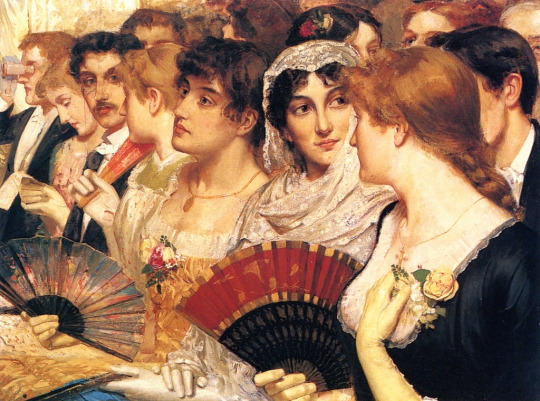
In the Front Row at the Opera (aka The Overture), William Holyoake, ca. 1880
Happy World Opera Day!
#art#art history#William Holyoake#genre painting#genre art#opera#World Opera Day#British art#English art#19th century art#Victorian period#Victorian art#oil on canvas#Glasgow Museums Resource Centre
637 notes
·
View notes
Text
Peeta Mellark would play the shit out of Animal Crossing and Cooking Mama.
#he’d go out of his way to make friends with the little animals#Katniss would quietly enjoy how cute and comfy the game is#then Everlark would designate one of their houses to share and put all their resources to make it looks amazing af#Peeta would do all the interior decorating#Katniss would obsessively get all the museum bugs and fishes#she’d love the diy receipes as well#they keep one house as a tent because Katniss loves it too much 😂#everlark#katniss everdeen#peeta mellark#thg#the hunger games
141 notes
·
View notes
Text

The Skull Index is now on Instagram!
Check us out on Bsky and Facebook too!
Are you a skull collector interested in collaborating with the skull index to help expand the ever-growing public resource database of vertebrate specimens? Email us today or check out our 'Get Involved' page at skull-index.com
#vulture culture#skulls#bones#vulture culture uk#taxidermy#animal skull#animal skulls#vultureculture#the skull index#museum#resources#educational rsources
47 notes
·
View notes
Text
"Welcome to Smithsonian Open Access, where you can download, share, and reuse millions of the Smithsonian’s images—right now, without asking. With new platforms and tools, you have easier access to more than 4.5 million 2D and 3D digital items from our collections—with many more to come. This includes images and data from across the Smithsonian’s 21 museums, nine research centers, libraries, archives, and the National Zoo.
What will you create?"
124 notes
·
View notes
Text
Are you interested in browsing old web designs for inspiration or even just to experience a little nostalgia? Webdesignmuseum.com hosts a collection of screenshots of websites showcasing designs from the 90s through to the late 2000s.
While the archives aren't interactive, they serve as a reminder of design staples of the past. Website graphics archived by webdesignmuseum include but aren't limited to
playstation (1990s-2010s)
tokyoplastic (2003)
My Chemical Romance (2004)
The Worlds First Website (1991)
Superdeux (2003)
Website timelines are offered for each archive. Each archive is also sorted with relevant tags including but not limited to
Early 00s flash
Golden Age of Web Design
Design and Art
Pixel Design
#resources#old web#old internet#webcore#internetcore#reference#y2k#aesthetic#links#sources#information#graphics#archive#web design museum#upload#nostalgiacore
27 notes
·
View notes
Text
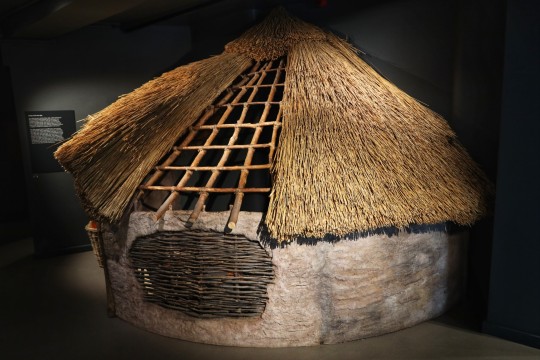
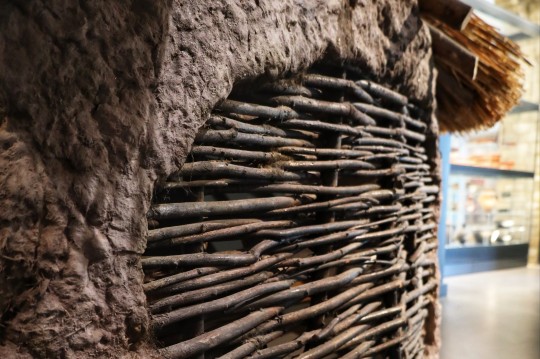
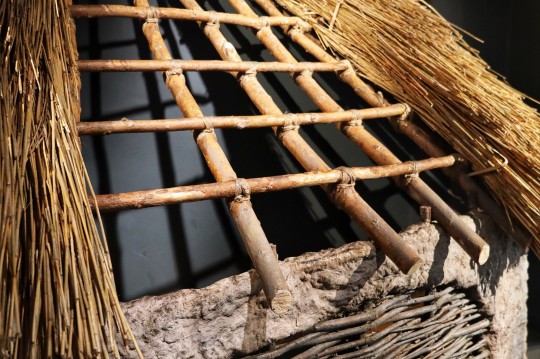
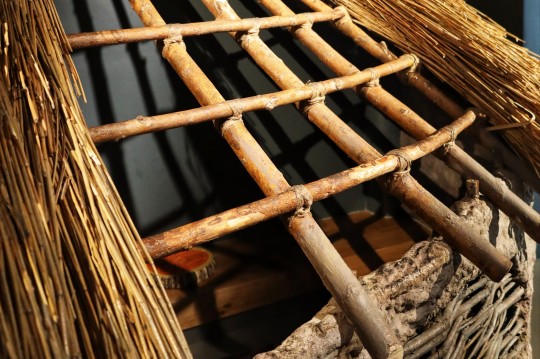
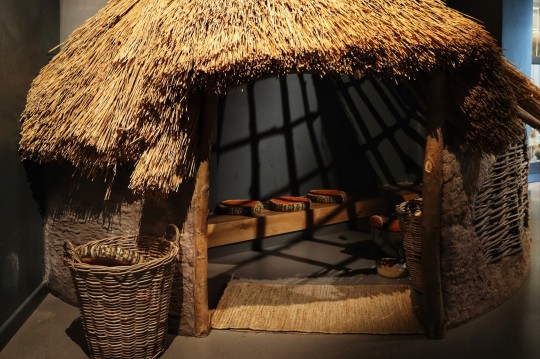
Reconstructed Iron Age Roundhouse, Corinium Museum, Cirencester
#ice age#stone age#bronze age#copper age#iron age#neolithic#mesolithic#calcholithic#paleolithic#prehistoric#prehistory#roundhouse#settlement#archaeology#reconstruction#shelter#natural resources#natural materials#corinium museum#Cirencester#community#hearth
99 notes
·
View notes
Text
In relation to the last post, the best date my bf ever took me on was letting me wander around the Royal BC Museum and loudly talk about how every piece in the aboriginal gallery was stolen, most of it not even being local, but taken from the mainland, far away from its home and the people it rightfully belonged too. By the end I had not one but two different security guards trailing me around the rest of the exhibits <3
#dont confuse my ranting as hatred for museums. in fact i think they can serve as an extremely valuable resource and place of knowledge#BUT ONLY IF DONE RIGHT and not filled to the brim with stolen items and regalia.
12 notes
·
View notes
Text
My bosses: Write and prepare to deliver educational programs about Native American history, Lewis and Clark, and the Oregon Trail
Me, who has not taken a history class since high school: Why would you ask me, an ecologist, this
#personal#my dudes I'm not qualified for this!!!!!#I'm doin my level fucking best but ?????#I get we don't have anybody else in the education dept rn but! Outsource! We should be making sure our material is written by experts!#We're a fucking MUSEUM we have INTERPRETIVE STANDARDS#Anyway. If anyone knows of any good (free or cheap cause they aint paying for my research costs) resources#For teaching abt those topics (esp Native history the others I'm not as worried abt) please like
8 notes
·
View notes
Text
look I may not know a thing about fashion but I did *wiggles eyebrows seductively* take a lot of literature classes in college
#met gala#whether I like the dress is secondary to whether it matches the general vibe of the short story okay#let's talk about the INEVITABILITY OF CHANGE and the FALL OF THE ARISTOCRACY#let's talk about the way the rich use natural resources to enrich themselves while the poor workers are shut out#let's talk about the way that you can adapt to the future or you can be turned to stone in your rotting museum of antiques!
10 notes
·
View notes
Text
random archive sites (old photos, illustrations, old movies, books, etc)
Library Of Congress
Public Domain Review
British Library Flickr page
New York Public Library digital collection
Paris Museums collection
I'll probably add more with time, and please feel free to comment/reblog with more
#library#web library#library of congress#public domain#british library#new york public library#public library#public#photo#photos#book#books#architecture#design#resources#art resources#art reference#my post#wondrousrainbow#movie#movies#old movies#paris museums#paris museum#museums#museum#digital collection
3 notes
·
View notes
Text
Instead of using AI generated "art", here's an incredible resource of public domain images that can be used for table top game design or many other purposes!
#free art#public domain#table top gaming#public domain art#art#metropolitan museum#Rijksmuseum#New York Public Library#Biodiversity Heritage Library#Artvee#National Gallery of Art#cool things#free resources#creativity
13 notes
·
View notes
Text
.
#i think I'm gonns give up on dating#i am so tired of people assuming I'm not interested in them because I don't want to hang out for several hours or more#i tell people demisexual and it can take me a while to fall for someone#but no one is willing to take the time#also the notion that people are trying to read my body language to decide whether or not i'm having a good time#makes me think of my abusive ex who would use my body language as a reason to abuse me#i am so tired#notfandom#vent#was really looking forward to a date night at the museum but she never thought it was going to happen after our last date#like sorry I was stressed after scratching my thumb on a dirty nail?#and had to really focus on the board game you were teaching me cause i have Dyscalulia which makes counting resources really hard?
4 notes
·
View notes